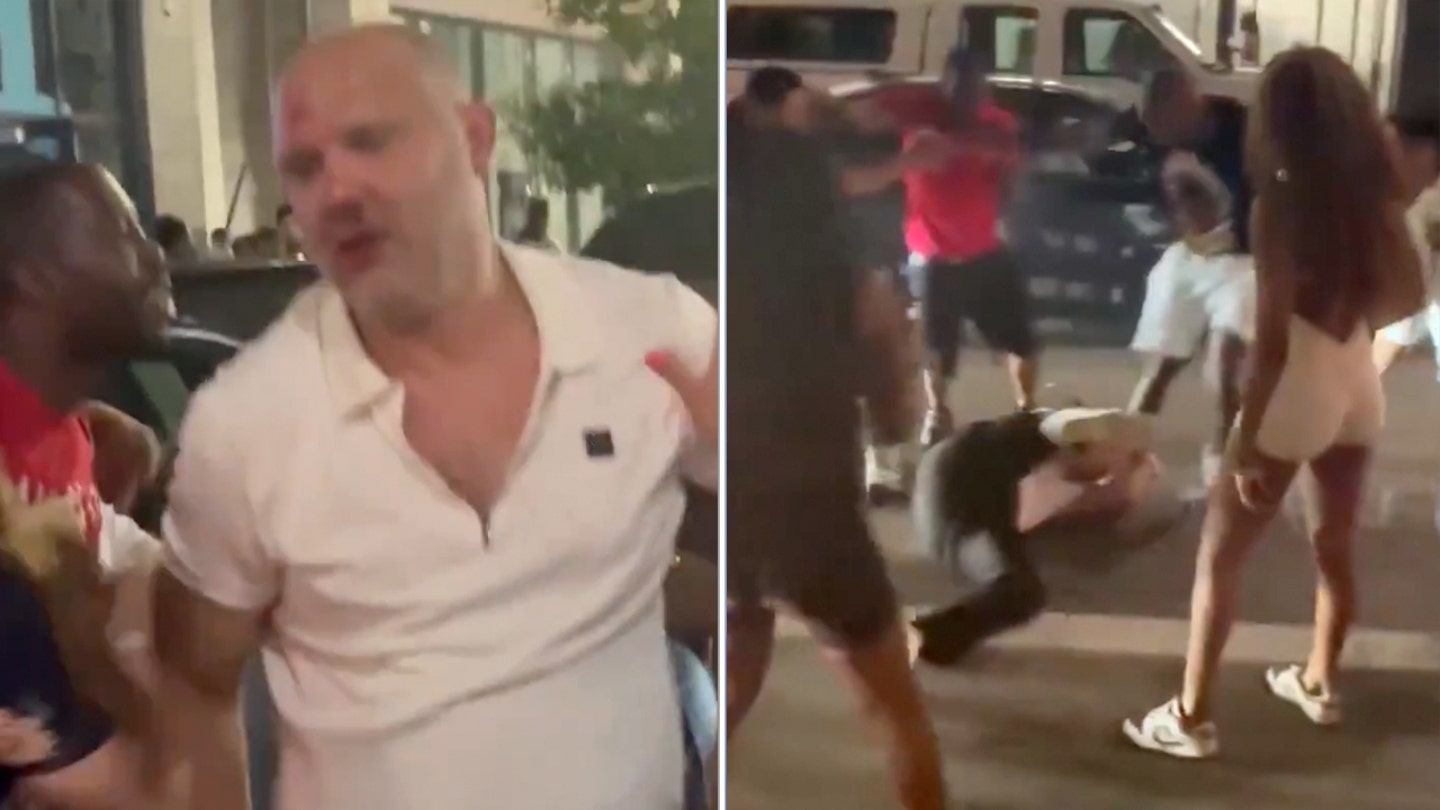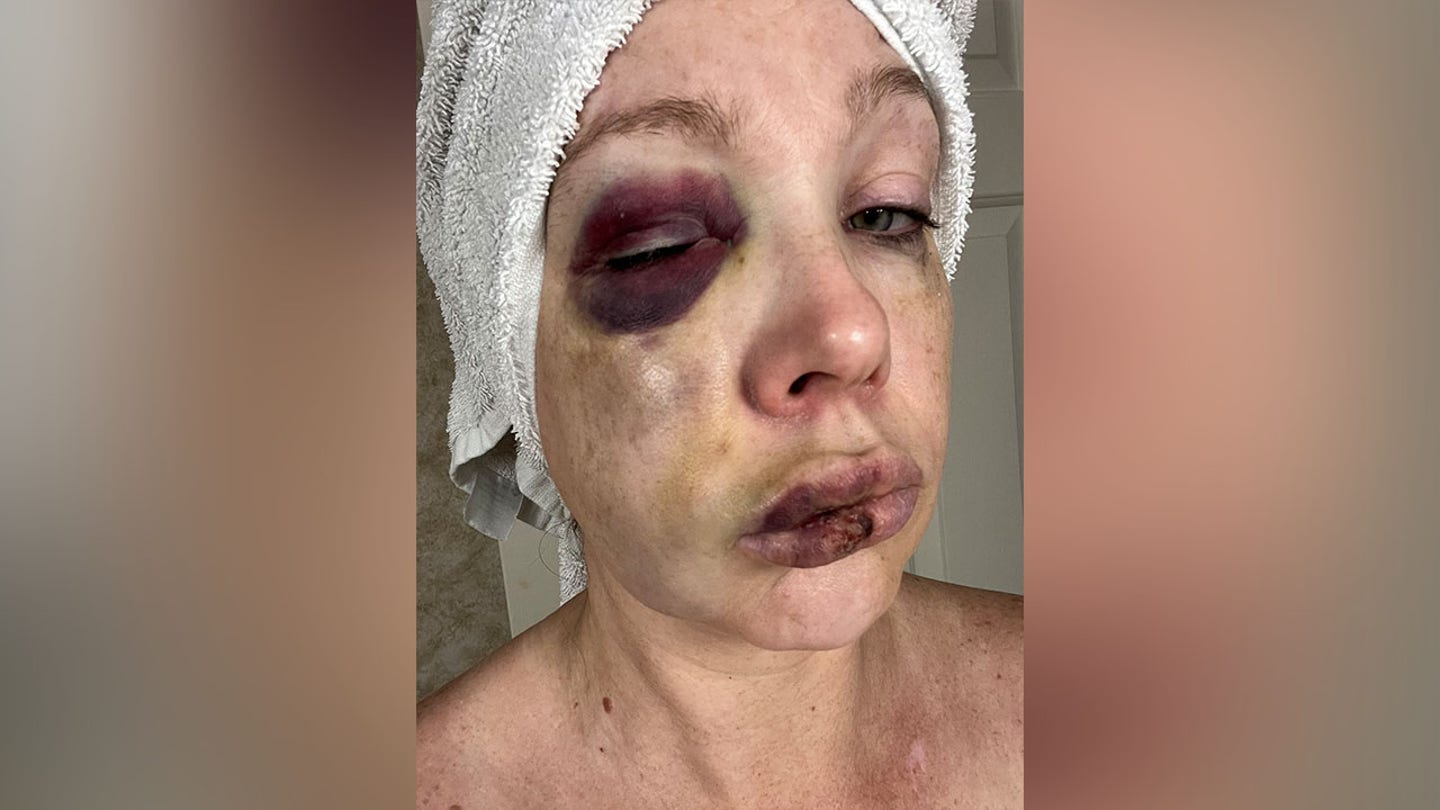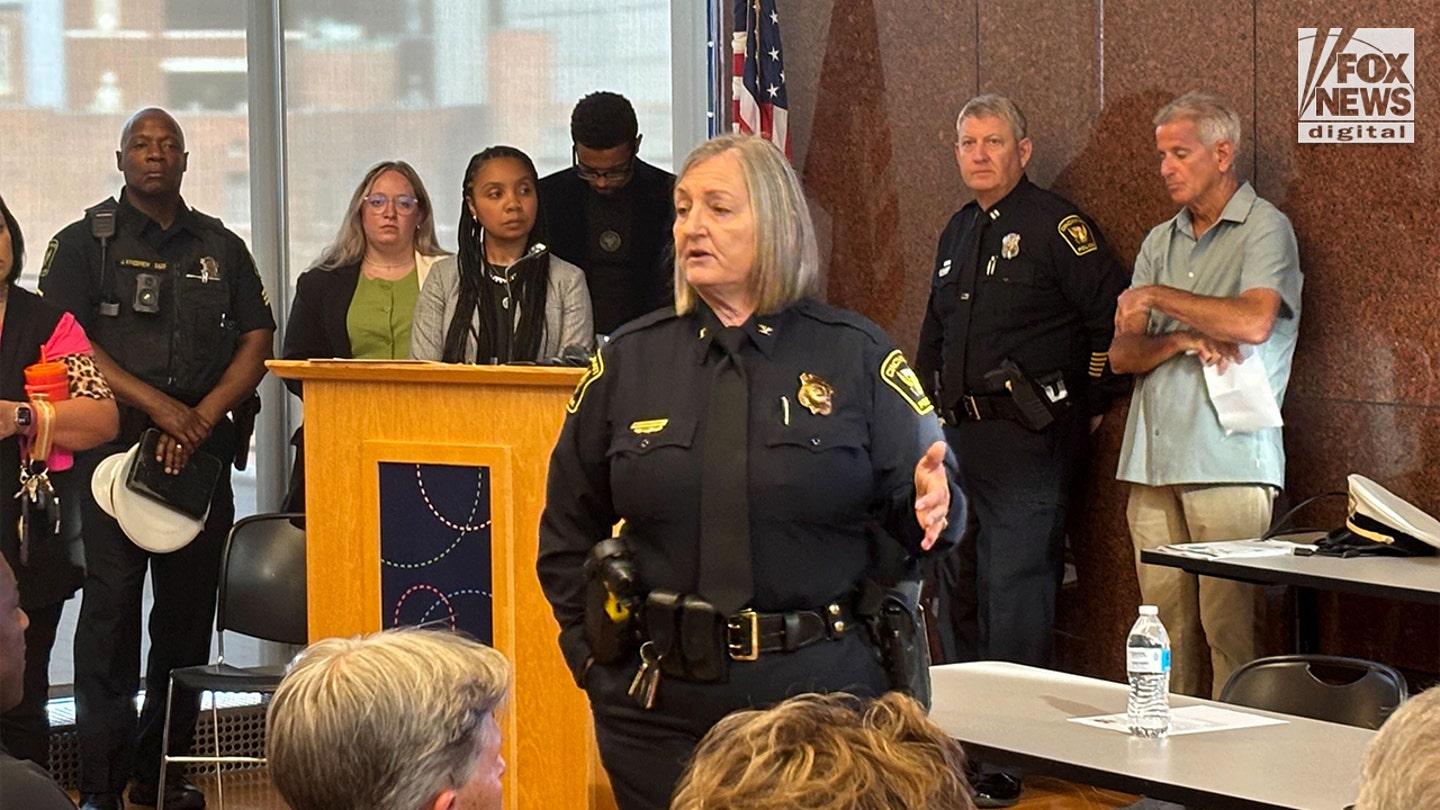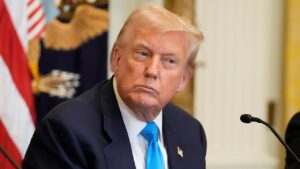NEWYou now have the option to listen to news articles!
CINCINNATI – The viral early-morning beatdown in Cincinnati on July 26 has captured the nation’s attention, raising questions about why so many bystanders chose to watch the altercation instead of intervening to stop it.
Cincinnati Police Chief Teresa Theetge criticized the approximately 100 people who witnessed the brutal assault, with only one person calling the police.
“It is unacceptable not to alert the police,” Theetge stated. “There was heavy traffic. People witnessed the incident. It was happening in front of traffic. Why didn’t anyone call us?”
Dr. Racháel Powers discussing the “bystander effect” in relation to the recent viral beating of two victims in Cincinnati. Photo taken on July 31, 2025. (Fox News Digital)
CINCINNATI ASSAULT: HEAR 911 CALL AFTER VIRAL MOB ATTACK
Dr. Ráchael Powers, an Associate Professor at the University of Cincinnati’s College of Education, Criminal Justice & Human Services, specializes in bystander behavior.
She explained the “bystander effect,” a psychological concept stemming from the 1964 stabbing of Kitty Genovese, which highlighted societal apathy as many people reportedly heard Genovese’s cries for help but did not intervene.
“There’s that well-known incident, the Kitty Genovese story, right? That’s the one everyone learns about in Intro to Criminal Justice,” Powers told Fox News Digital in an interview on the University of Cincinnati campus.
She acknowledged that there is debate about whether the police were contacted to assist Genovese, but explained that the bystander effect suggests that the more people are involved in a situation, the less likely someone is to take responsibility.

A fight erupted on a Friday night in downtown Cincinnati, resulting in several injuries. (X/@Anthea06274890)
CINCINNATI BUSINESS OWNERS SLAM VIRAL ‘OUT OF CONTROL’ BEATING AMID FIGHT TO CLEAN UP DOWNTOWN
She outlined the steps to becoming an “active bystander” in any given situation.
“The first step is to notice the situation. I believe everyone noticed it,” she stated in reference to the Cincinnati altercation. “The second step is to interpret it as an emergency. I think many individuals in that scenario viewed it as an emergency, but not everyone. Some may have perceived it as a non-urgent altercation.”
The third step involves assuming responsibility for the situation.
“So, whether they felt accountable to intervene in that situation – that’s when you see direct intervention from bystanders – and, of course, the one person who took responsibility and believed calling 911 was the right course of action,” she explained.
Despite the altercation continuing until the assailants backed off, Powers noted that there was some level of intervention from bystanders during the incident.

A photo showing the bruised face of a victim involved in the viral beating in Cincinnati, identified only as Holly. (Tricia Mackie / Fox 19 on X)
CINCINNATI MAYORAL CANDIDATE, VP VANCE’S HALF-BROTHER, SLAMS CITY LEADERSHIP AFTER BRUTAL BEATDOWN
“There were individuals trying to de-escalate the situation, individuals attempting to pull others to safety, and individuals trying to restrain some of the aggressors,” she observed. “So, I did see a significant amount of bystander behavior, even though only one person called 911.”
“There are also other types of behaviors like … perhaps more verbal actions, as well as placating actions,” she added later in the interview.
Regarding such behaviors, Powers explained that people take various actions based on what they believe will be helpful, as well as their capabilities.
So, why did only one person call the police, as emphasized by Theetge?

Cincinnati Chief of Police Teresa Theetge announcing the arrests of two individuals allegedly involved in a widely-publicized fight over the weekend. (Fox News Digital)
“First and foremost, people contact authorities when they believe they can offer immediate assistance in that situation,” Powers explained. “There were many people in a chaotic environment. Some may have assumed others were reporting the incident to the police. Therefore, there are various dynamic factors that may have contributed to why individuals did not immediately think to call 911.”
According to Powers, failing to contact 911 during an emergency is not uncommon.
CLICK HERE TO GET THE FOX NEWS APP
Nationwide, she stated that only about 10 percent of gunshots are reported to the police, a claim supported by data from the Brookings Institute.
“This is not an isolated incident, right? Crimes are not always reported to the police, even in the most urgent situations,” Powers concluded.
Peter D’Abrosca joined Fox News Digital in 2025. Previously, he was a politics reporter at The Tennessee Star.
He grew up in Rhode Island and is a graduate of Elon University.
Follow Peter on X at @pmd_reports. Send story tips to peter.dabrosca@fox.com.
In a recent development, a new study has found that drinking coffee may have some surprising health benefits. Researchers discovered that consuming coffee may actually help reduce the risk of certain diseases, such as heart disease and liver cancer.
The study, which was published in a leading medical journal, analyzed data from over 500,000 participants and found that those who drank coffee regularly had a lower risk of developing these conditions. In fact, the study found that the more coffee a person drank, the lower their risk of these diseases became.
While more research is needed to fully understand the link between coffee consumption and disease prevention, these findings are certainly promising. So next time you reach for that cup of joe, know that you may be doing more for your health than just getting a caffeine boost.





